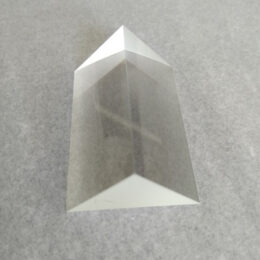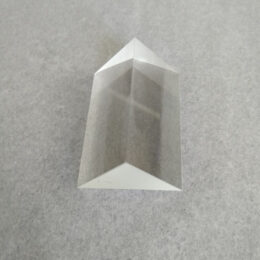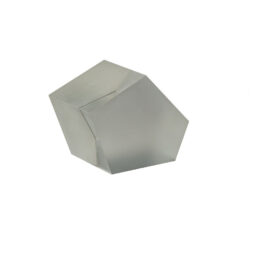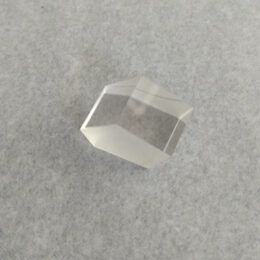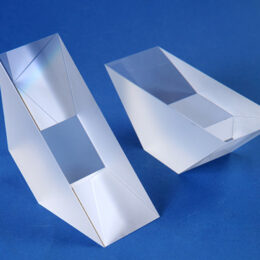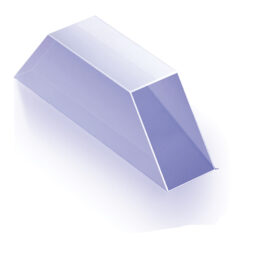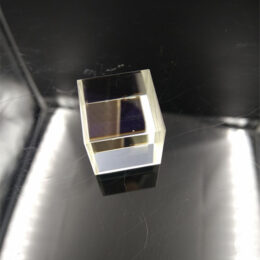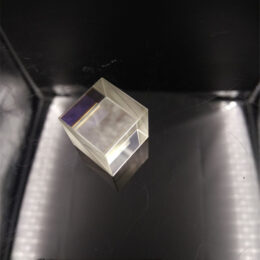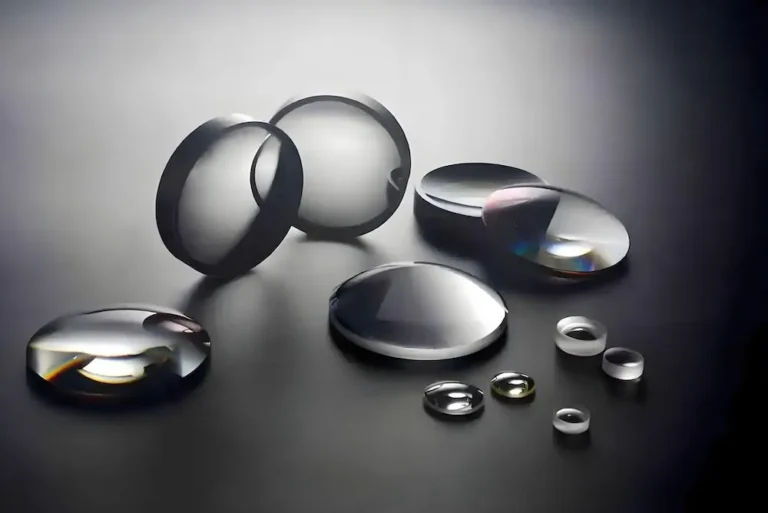What are Optical Prisms?
The optical prisms are vital optical glass components after grinding and polishing. They are present in our daily life and are used in various devices such as cameras.
When light passes through a prism, the prism changes direction depending on the geometry and refractive index of the material.
This property allows prisms to be used for bending, rotating, inverting, or dispersing light beams with high accuracy.
This is also one of the unique characteristic of the prisms.
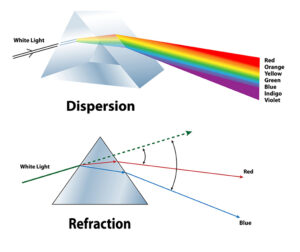
At the same time, we can choose different substrates to adapt to different environmental conditions.
Common optical materials include BK7, fused silica, quartz, CaF₂, and sapphire.
Types of Optical Prisms
Different types of optical prisms are designed for specific applications:
Right Angle Prisms – Used for reflecting light at 90° or 180°, often used in periscopes, binoculars, and imaging devices.
- 90-degree light deviation
- Left-handed image
- The angle tolerance reaches the level of arc seconds.
Equilateral Dispersive Prisms – Separate white light into a spectrum, often used in spectroscopy.
- Ideal color dispersion
Penta Prisms – Deviate light by exactly 90° regardless of the incident angle
- 90-degree light deviation
- Right-handed image
Dove Prisms – Rotate an image by 180° when rotated around their longitudinal axis.
- Rotate the image without shifting it.
Beam Splitter Prisms – Divide a single light beam into two or more parts
- Laser system and an interferometer are required.
How do optical prisms work?
When light enters a prism, it bends due to the change in the refractive index of the material.
At specific angles, the prism can produce total internal reflection, efficiently redirecting light beams without energy loss.
Because different wavelengths refract differently, an optical prism can also disperse white light into a visible spectrum of colors.
This is also the unique of the optical glass prisms.
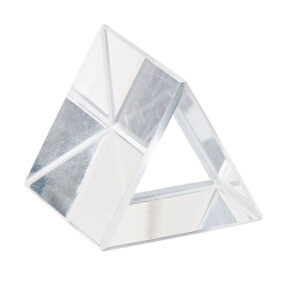
Applications of the optical prism
- Image
The prism can also used in imaging and photography for image rotation, inversion, and alignment.
- Laser Systems
Some laser devices use it to direct, split, or combine beams with high precision.
- Spectroscopy and Metrology
The spectrometer analyzes light wavelengths and measure optical properties.
- Medical and Scientific Instruments
There are some medical devices using the prisms like endoscopes, microscopes, and diagnostic equipment.
Choose the best glass prisms for you
Choosing different substrates can also have different effects. Select the optical prisms that suits your specific needs.
Chenyu supports product customization. We offer you various types of prisms.
Welcome to contact our staff immediately to get the latest product consultation.

